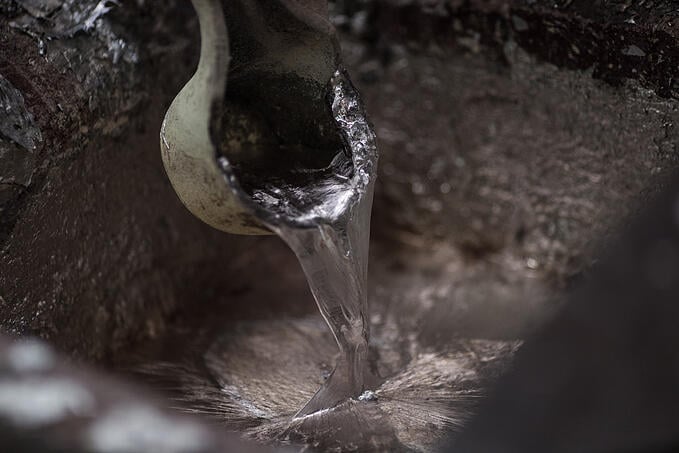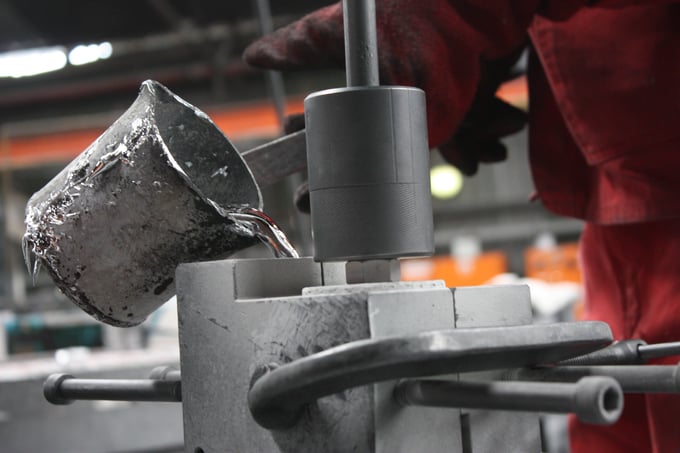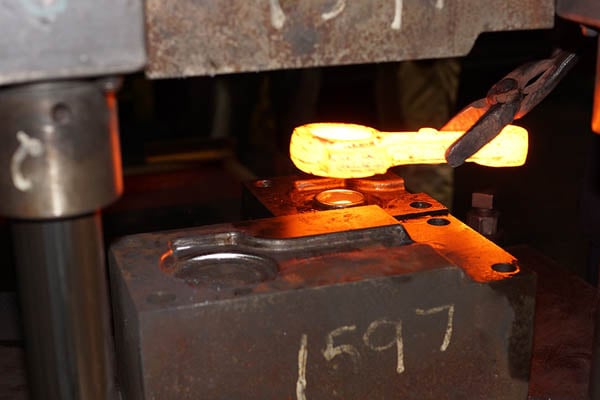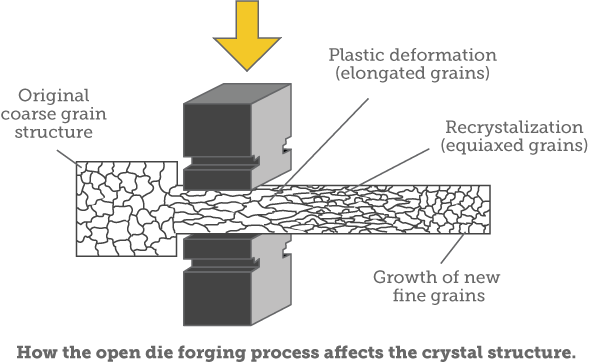When selecting a process to produce a metal component, chances are a buyer will come across a staggering range of manufacturing methods to consider. Casting and forging are the most prevalent metalworking process for steel and iron products. Each metal manufacturing method offers its own pros, cons, capabilities and cost implications. Below we'll explore these two common processes – as well as advantages of each – to help determine which is most suitable for your upcoming project.

GRAVITY CASTING
How It Works
Gravity casting, also called gravity die casting or GDC, is a repeatable metal manufacturing process in which liquid or molten non-ferrous metal is poured into a permanent mold or steel die. What makes this process unique is that gravity, rather than high pressure, enables the metal to fill the mold. There are three main stages of GDC:
1. A release agent is applied to the die.
2. Molten metal is poured into the tool by hand using a steel ladle or by machine.
3. After the part has cooled, the die is manually or mechanically opened and the part is ejected.
When to Use It
Gravity casting is typically used to produce larger, thicker or heavier components, including escalator treads, wheels and automobile struts. GDC can cast thinner walls than sand casting, and complex designs can be produced easily.
 Image via Wahl Industries
Image via Wahl Industries
Advantages
Lower tooling costs than other processes
Faster production times
Highly repeatable process
Thinner walls possible
Large range of alloy choices
Complex parts easy to produce
Good dimensional accuracy
FORGING
How It Works
Forging is a manufacturing process in which metal billets or ignots are heated and shaped using localized compressive forces from a hammer or die. The combination of thermal and mechanical energy causes the material to change shape while in a solid state. The primary difference between this two processes is the material's initial state (solid vs. liquid). A wide range of variations exist, from cold to press to roll forging.

When to Use It
Forging is the ideal process when you need to produce a sturdy metal part that can withstand high temperature or operating force for long periods of time. Forged steel is generally stronger and more reliable than castings and plate steel because the grain flows of the steel are altered, conforming to the shape of the part. Examples of forged parts include flywheels, fasteners, bearings and power train components.
One major benefit of this method is uniformity of grain composition. The heating and shaping of the metal actually recrystallizes the material and refines its grains. These changes improve the mechanical properties of the metal, allowing it to bear greater loads, withstand more impact and have greater overall shear strength.

Diagram via Scot Forge
Advantages
Superior structural integrity
Finished product is mechanically strong and durable
Parts can withstand greater impact than cast parts
Reduced need for surface finishes to achieve material strength
Reduced material costs
Reduced process control and inspection requirements
Whether your product requires forged or gravity cast manufactured components, if you are looking for better quality, cost savings or simply to diversify your supply chain,you can contact us:info@sydensen.com

 English
English
